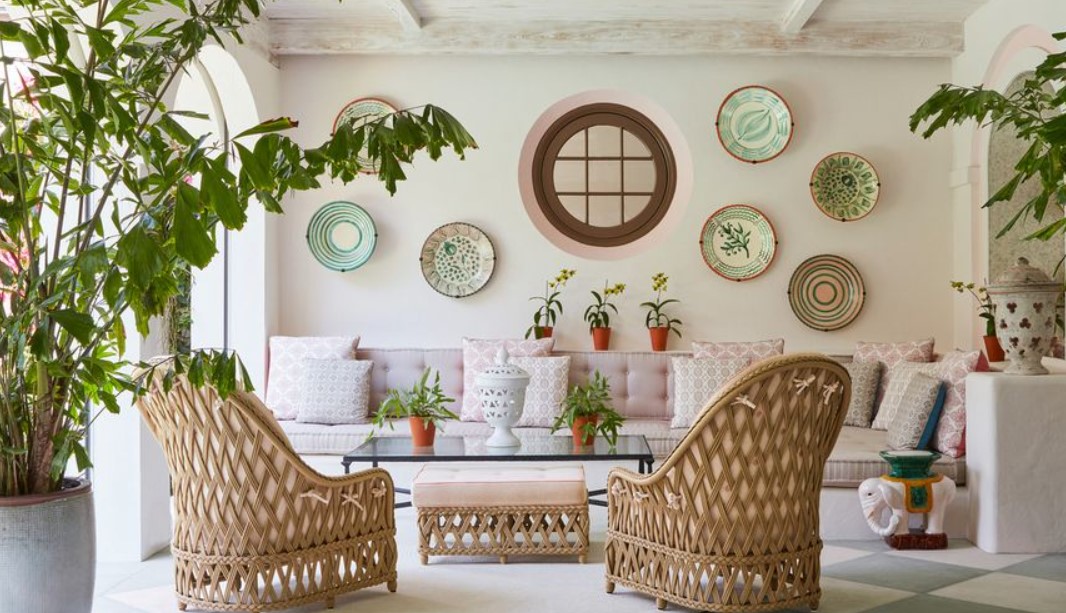Personalizing your home with DIY wall hangings is a fantastic way to showcase your creativity and add a unique touch to your decor. Whether you’re looking to refresh a room or fill an empty wall, these innovative DIY wall hanging ideas are sure to inspire and bring character to your living space.
1. Macramé Wall Hangings
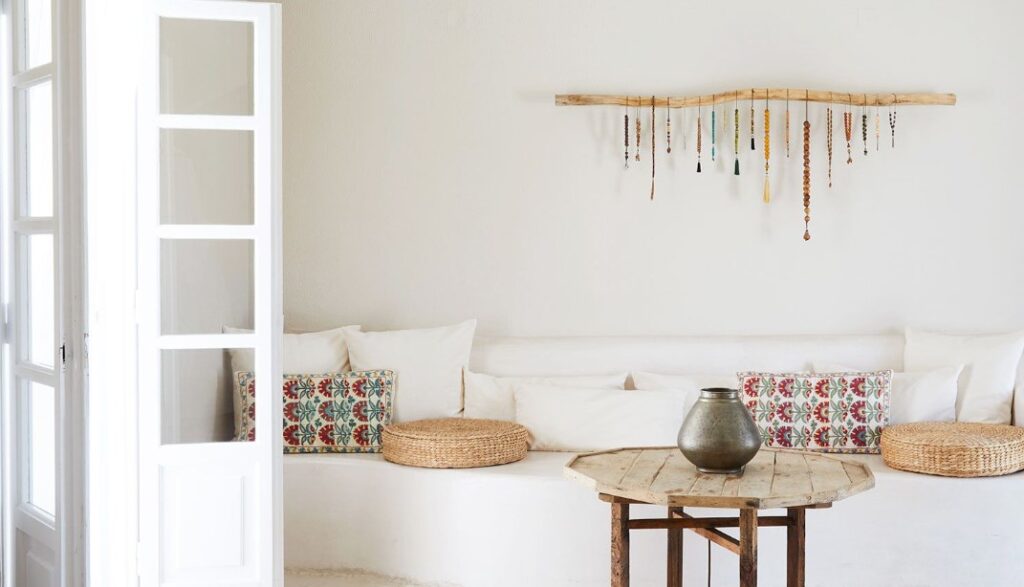
Macramé, the ancient craft of knotting, has made a resounding comeback in recent years, particularly in the realm of home décor. This resurgence can be attributed to its versatility, aesthetic appeal, and the satisfaction derived from creating something beautiful with one’s own hands. In this article, we will delve into the world of innovative DIY macramé wall hangings, exploring techniques, materials, and design ideas that will help you craft unique and eye-catching pieces for your home.
Understanding Basic Macramé Knots
Before diving into more complex designs, it is essential to master the basic knots. Here are a few fundamental knots that form the foundation of most macramé projects:
- Square Knot: This is the most common macramé knot, created by weaving two cords over a central pair.
- Half Hitch: A versatile knot used to create spiral or diagonal patterns.
- Lark’s Head Knot: Often used to attach cords to a ring or dowel.
- Double Half Hitch Knot: Ideal for creating intricate designs and detailing.
Materials Needed for Macramé Wall Hangings
To create stunning macramé wall hangings, you will need a few essential materials. These include:
- Macramé Cord: Available in various materials such as cotton, hemp, and jute. Choose a thickness that suits your design.
- Wooden Dowel or Metal Ring: These serve as the base for your wall hanging.
- Scissors: Sharp scissors are crucial for clean, precise cuts.
- Measuring Tape: Ensures that your cords are the correct length.
- Beads and Feathers: Optional embellishments to add a unique touch to your piece.
Designing Your Macramé Wall Hanging
Choosing a Style
The beauty of macramé lies in its flexibility. Whether you prefer a minimalist look or an elaborate, bohemian style, there are countless designs to explore. Here are some popular styles:
- Geometric Patterns: Incorporate shapes like triangles and diamonds for a modern look.
- Fringe: Add a playful touch with long, flowing fringe at the bottom.
- Layered Designs: Create depth by layering different sections of knots.
Color Schemes
While traditional macramé is often seen in natural, off-white tones, don’t be afraid to experiment with color. Incorporating different hues can make your wall hanging stand out and match your home décor. Consider the following:
- Monochromatic: Stick to one color for a sophisticated, cohesive look.
- Contrasting Colors: Use bold, contrasting colors to create a statement piece.
- Ombre: Blend multiple shades of a single color for a gradient effect.
Adding Personal Touches
To make your macramé wall hanging truly unique, consider adding personal touches. This can be done by incorporating beads, feathers, or even small plants. Here are some ideas:
- Beaded Accents: Weave beads into your design for a bit of sparkle.
- Feathers: Attach feathers for a bohemian flair.
- Planters: Create pockets within your wall hanging to hold small succulents or air plants.
Step-by-Step Guide to Creating a Macramé Wall Hanging
Step 1: Preparing Your Materials
Begin by cutting your macramé cord to the desired lengths. A good rule of thumb is to use cords that are at least four times the length of your desired finished piece. Attach your cords to your wooden dowel or metal ring using the Lark’s Head Knot.
Step 2: Creating the Base
Start with a series of square knots to form the base of your wall hanging. This will provide structure and support for the rest of your design.
Step 3: Adding Detail
Incorporate different knots and patterns to add complexity and interest. For example, use double half hitch knots to create intricate designs, or add half hitch knots in a diagonal pattern for a dynamic look.
Step 4: Finishing Touches
Once your main design is complete, trim the ends of your cords to your desired length. You can leave the ends straight, or add fringe by unraveling the cords. Finally, attach any additional embellishments such as beads or feathers.
2. Embroidery Hoop Art
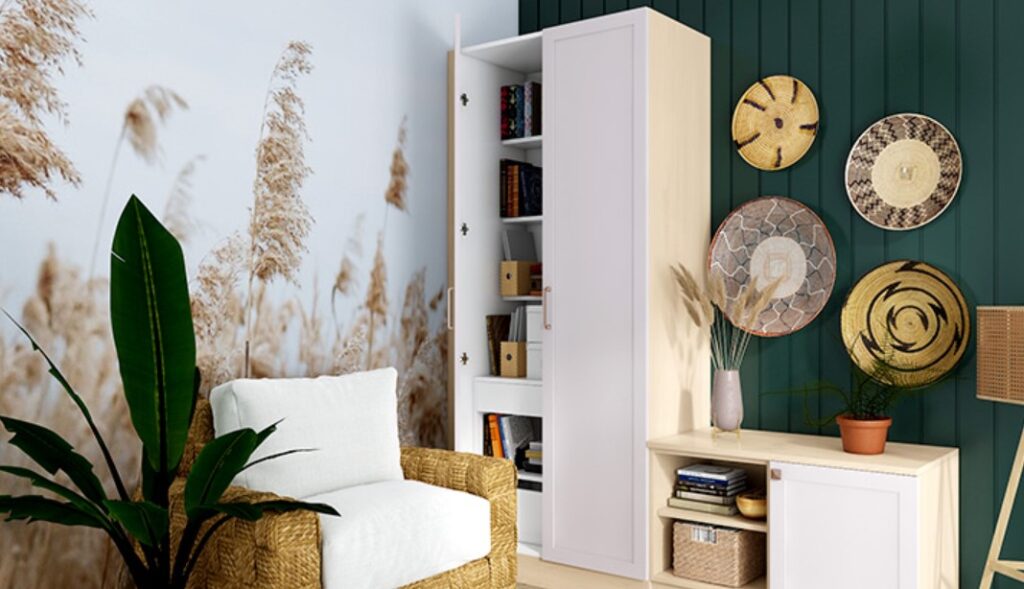
Fabric and Thread
Transform embroidery hoops into beautiful wall art by stretching fabric across the hoop and embroidering patterns, quotes, or images. This project is versatile, allowing you to use various fabrics and thread colors to create custom designs.
Mixed Media
Combine fabric, beads, buttons, and other embellishments within the hoop to create a mixed-media piece. This adds texture and dimension to your wall art, making it a standout feature in any room.
3. Hanging Planters
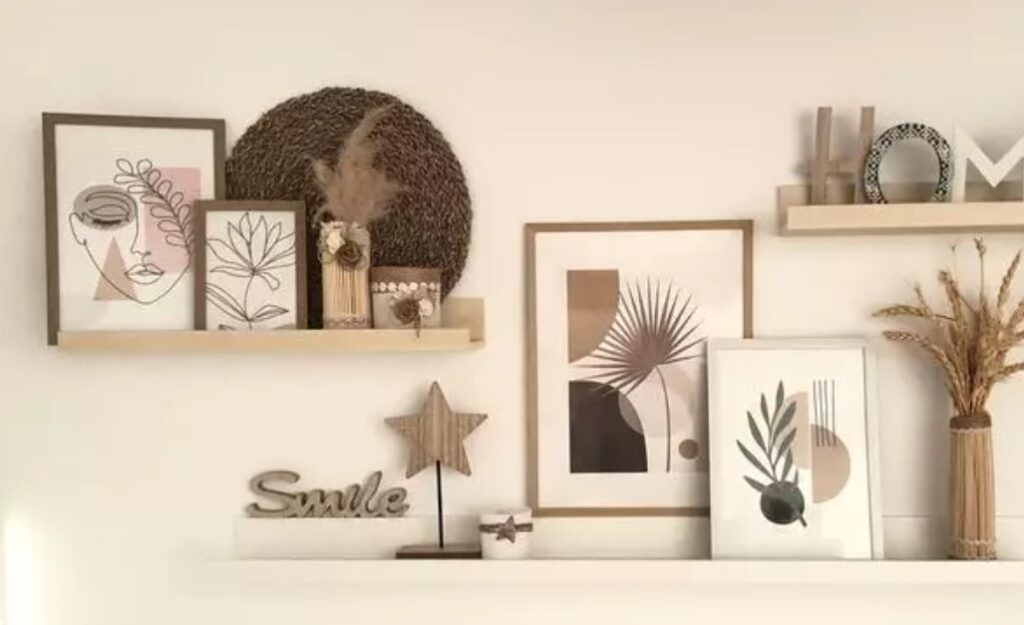
Transforming your living space with DIY hanging planters is an excellent way to incorporate greenery into your home décor. These hanging planters not only save floor space but also add a unique and creative touch to any room. In this article, we will explore various innovative DIY hanging planter ideas, techniques, and tips to help you create stunning displays that will thrive in your home environment.
Why Choose Hanging Planters?
Space-Saving Solutions
Hanging planters are ideal for small spaces where floor or shelf space is limited. By utilizing vertical space, you can create a lush, green environment without cluttering your living area.
Enhanced Aesthetic Appeal
Hanging planters add an element of visual interest and movement to a room. They draw the eye upward, creating a sense of height and dimension.
Improved Air Quality
Plants are known for their air-purifying properties. By incorporating hanging planters into your home, you can improve indoor air quality while enjoying the benefits of nature.
Materials and Tools for DIY Hanging Planters
To create your own hanging planters, you will need the following materials and tools:
- Plant Pots: Choose lightweight pots that have drainage holes.
- Macramé Cord or Twine: For creating the hanging structure.
- Hooks: Ceiling hooks to secure your planters.
- Scissors: Sharp scissors for cutting cords.
- Measuring Tape: To ensure accurate measurements.
- Beads and Decorative Elements: Optional embellishments to personalize your planters.
Innovative Hanging Planter Ideas
Macramé Hanging Planters
Macramé hanging planters are both stylish and functional. The intricate knotting techniques provide a sturdy structure for your plants while adding a bohemian touch to your décor.
How to Make a Macramé Hanging Planter
- Cut the Cord: Measure and cut several lengths of macramé cord, typically about four times the desired length of the finished planter.
- Create the Base: Tie a knot to hold all the cords together at one end, then divide the cords into groups.
- Weave the Knots: Use square knots or spiral knots to weave the cords together, leaving enough space for the plant pot.
- Secure the Pot: Place the plant pot into the macramé holder and tie the cords at the top to form a loop for hanging.
Repurposed Materials Planters
Using repurposed materials not only adds a unique touch to your hanging planters but also promotes sustainability. Here are some ideas:
Tin Can Planters
Clean and paint old tin cans, then use twine or wire to create a hanging structure. These planters are perfect for small herbs or succulents.
Mason Jar Planters
Mason jars make excellent hanging planters. Wrap the top of the jar with wire to create a handle, then hang it from a hook or a wooden board.
Wooden Frame Planters
A wooden frame planter combines the beauty of natural wood with the greenery of plants. This type of planter can be customized to fit any space or design aesthetic.
How to Make a Wooden Frame Planter
- Choose the Wood: Select lightweight wood for the frame.
- Cut and Assemble: Cut the wood to the desired size and assemble it into a frame using nails or screws.
- Attach Pots: Secure plant pots to the frame using hooks or brackets.
- Hang the Frame: Use strong rope or chain to hang the frame from the ceiling or a sturdy wall hook.
Tips for Thriving Hanging Planters
Choosing the Right Plants
Not all plants are suitable for hanging planters. Here are some excellent choices:
- Pothos: Known for its trailing vines and low maintenance.
- Spider Plant: Hardy and easy to care for, with striking green and white leaves.
- String of Pearls: A unique succulent with cascading strands.
- Boston Fern: Adds lush greenery and thrives in indirect light.
Watering and Maintenance
Proper care is essential to keep your hanging planters looking their best:
- Watering: Ensure that your hanging planters have adequate drainage to prevent waterlogging. Check the soil moisture regularly and water as needed.
- Lighting: Position your hanging planters in areas with appropriate light levels for the chosen plants. Some plants thrive in bright, indirect light, while others prefer low-light conditions.
- Pruning: Regularly trim dead or overgrown foliage to encourage healthy growth and maintain a tidy appearance.
Fertilizing
Feed your plants with a balanced, water-soluble fertilizer every few weeks during the growing season to ensure they receive essential nutrients.
4. Woven Wall Hangings
Handmade Looms
Create a woven wall hanging using a homemade loom. Weaving allows you to experiment with different textures and colors using yarn, fabric strips, and natural fibers. The result is a tactile and visually appealing piece of art.
Incorporate Natural Elements
Add natural elements like feathers, twigs, or dried flowers into your weaving to give it an organic feel. This enhances the natural beauty of your wall hanging and creates a connection to the outdoors.
5. DIY Photo Display
String and Clips
Display your favorite photos using string and clips. Attach a length of string to the wall and use clothespins or binder clips to hang photos, postcards, or small artworks. This flexible and changeable display allows you to update your wall decor easily.
Polaroid Wall
Create a Polaroid wall by arranging instant photos in a grid pattern. Use adhesive putty or washi tape to stick the photos to the wall without damaging the paint. This creates a personalized photo gallery that can be expanded over time.
6. Wall Tapestries
Painted Tapestries
Make a painted tapestry by decorating a piece of fabric with fabric paint or dye. Use stencils, freehand painting, or tie-dye techniques to create a unique design. Hang the tapestry on a dowel or curtain rod for an easy wall display.
Printed Fabrics
Use printed fabrics as tapestries. Simply hem the edges of a large piece of fabric with a bold print or pattern, and hang it on the wall. This is an easy way to add color and interest to a large wall space.
7. Wooden Wall Art
Geometric Designs
Craft geometric wall art using wooden dowels or scrap wood. Cut the wood into various lengths and arrange them into geometric patterns. Paint the pieces in contrasting colors for a modern look.
Rustic Signs
Create rustic signs using reclaimed wood. Paint or stencil inspirational quotes, family names, or welcome messages onto the wood. This adds a personal and heartfelt touch to your home decor.
8. Textile Wall Hangings
Quilted Wall Art
Make a quilted wall hanging by sewing together fabric squares in a pattern or design of your choice. This project is perfect for using up fabric scraps and adds a cozy, handmade feel to your decor.
Felt Banners
Craft a felt banner by cutting shapes, letters, or designs out of felt and sewing or gluing them onto a background. Hang the banner with a string or ribbon for an easy and playful wall decoration.
DIY wall hangings are a wonderful way to add personality and charm to your home. With these innovative ideas, you can create custom pieces that reflect your style and creativity. From macramé to woven art, there’s a project here for every skill level and aesthetic. So gather your materials and start crafting beautiful wall decor that makes your space truly your own.
Benefits of Innovative DIY Wall Hangings
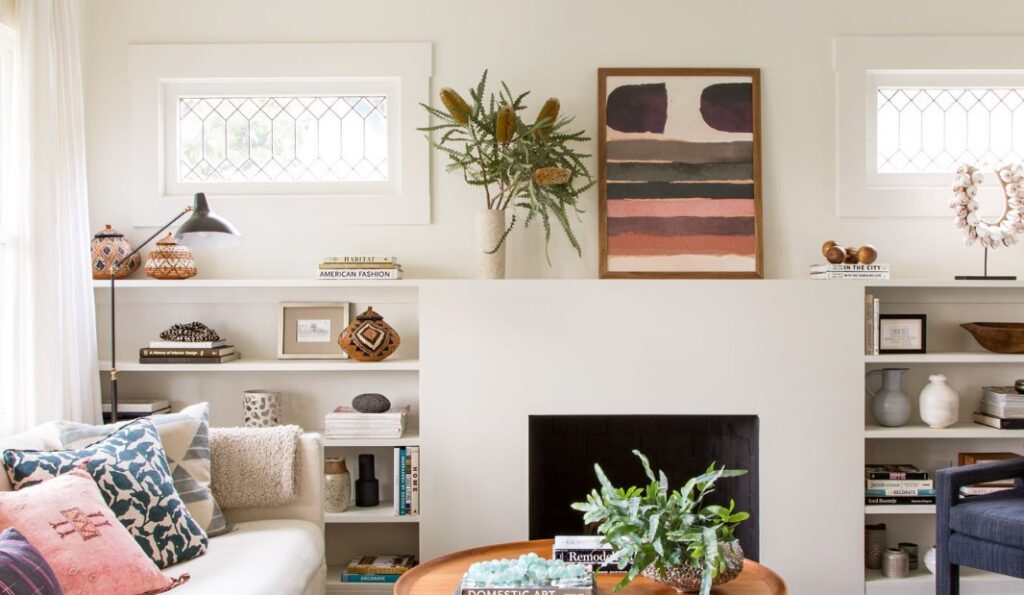
Innovative DIY wall hangings offer a unique blend of aesthetic appeal and personal satisfaction, making them an excellent addition to any home. These custom creations not only enhance your living space but also provide numerous other benefits. In this article, we will explore the various advantages of incorporating DIY wall hangings into your home décor.
Personal Expression and Creativity
Unique Personal Touch
DIY wall hangings allow you to express your personal style and creativity. Unlike store-bought décor, which can be generic and impersonal, handmade wall hangings reflect your individuality and taste. Whether you prefer a minimalist design or an intricate pattern, creating your own wall art gives you the freedom to experiment with different materials, colors, and textures.
Creative Outlet
Engaging in DIY projects provides a creative outlet that can be both relaxing and fulfilling. Crafting wall hangings can serve as a form of artistic expression and a way to unwind after a long day. The process of designing and creating something with your hands can be incredibly satisfying and therapeutic.
Cost-Effective Home Décor
Affordable Materials
One of the most significant benefits of DIY wall hangings is their cost-effectiveness. Many materials needed for these projects are affordable and readily available. You can repurpose items you already have at home, such as fabric scraps, yarn, or old frames, to create stunning wall art without breaking the bank.
Budget-Friendly Customization
Professional wall art and décor can be expensive, especially if you want something unique or custom-made. DIY wall hangings offer a budget-friendly alternative that allows you to achieve a high-end look at a fraction of the cost. By making your own décor, you can customize pieces to fit your space perfectly and match your existing interior design.
